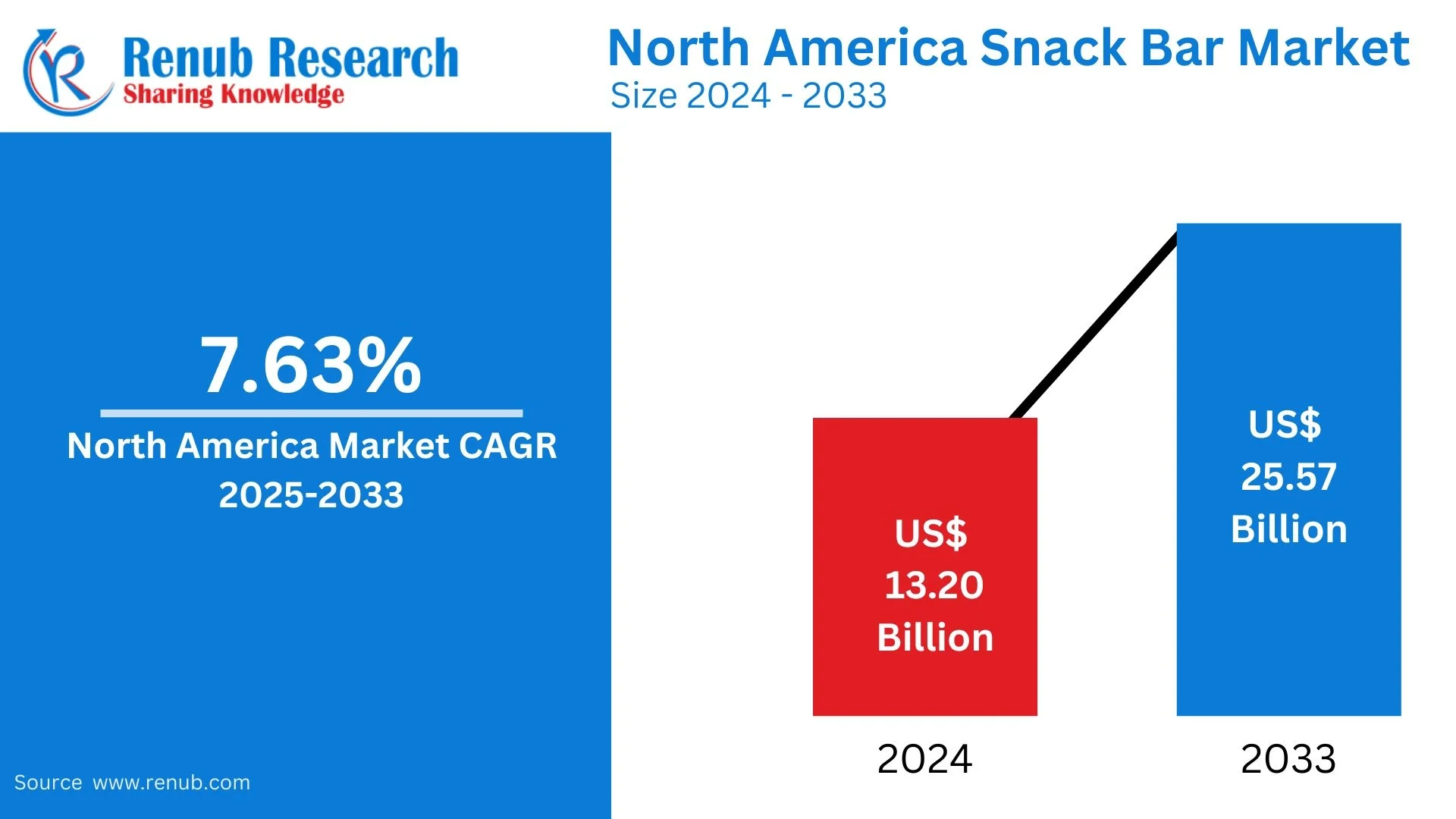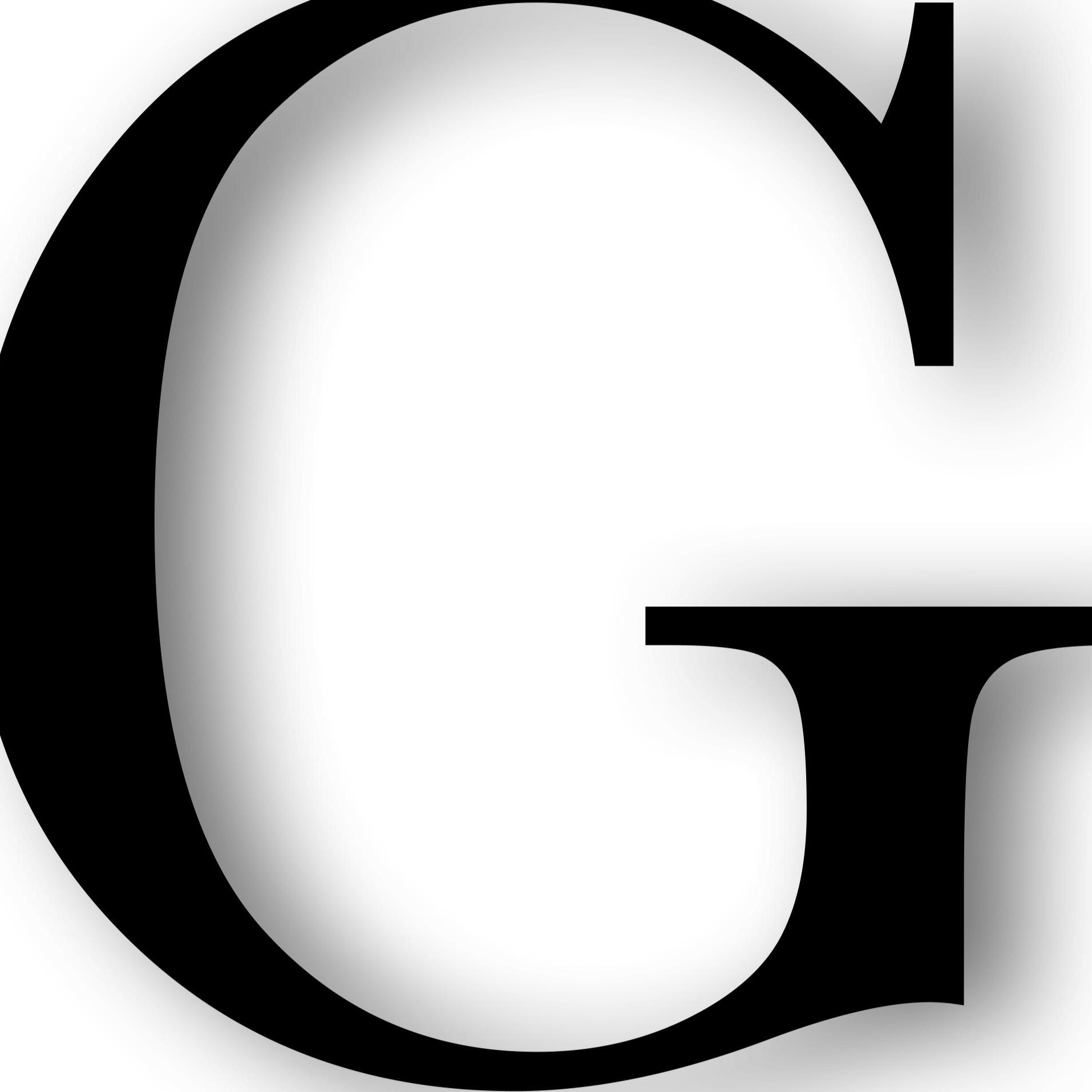Healthy, On-the-Go Snacking is Reshaping the Food Industry in North America
According to the latest report by Renub Research, the North America snack bar market is projected to grow from USD 13.20 billion in 2024 to USD 25.57 billion by 2033, registering a CAGR of 7.63% from 2025 to 2033. The industry’s rapid growth is being propelled by evolving consumer lifestyles, the demand for convenient yet healthy meal replacements, the rise of plant-based diets, the increasing popularity of clean-label ingredients, and growing consumer interest in functional benefits such as immunity support, digestive health, and sustained energy.
Request sample Report:https://www.renub.com/request-sample-page.php?gturl=north-america-snack-bar-market-p.php
Snack bars—once seen as quick energy boosters—have now evolved into a multi-functional food category offering nutritional value, portability, and customization to suit diverse dietary needs. With consumers becoming more health-conscious and time-strapped, the snack bar market in North America is undergoing a major transformation in product innovation, marketing strategies, and retail presence.
Busy Lifestyles Driving the Shift Toward On-the-Go Nutrition
Modern consumers are busier than ever, with work schedules, commuting, and active lifestyles leaving little time for traditional sit-down meals. This has driven the demand for portable, nutrient-dense snacks that can be consumed anytime, anywhere.
Snack bars fit this requirement perfectly, as they combine convenience with balanced nutrition. They are increasingly being marketed as meal replacements rather than just snacks, appealing to office workers, fitness enthusiasts, students, and travelers.
The trend is further supported by the growing popularity of snackification, where consumers opt for multiple small snacks throughout the day instead of three large meals.
Health and Wellness Trends Reshaping the Snack Bar Market
Health-conscious consumers are at the heart of the snack bar boom in North America. Some of the most influential trends include:
· Plant-Based Nutrition: A surge in vegan and vegetarian consumers is boosting the demand for bars made with nuts, seeds, plant proteins, and dairy alternatives.
· Clean-Label Demand: Shoppers are increasingly reading ingredient lists and avoiding artificial additives, preservatives, and high sugar content.
· Functional Ingredients: Bars infused with probiotics, adaptogens, superfoods, and vitamins are gaining traction.
· High-Protein Offerings: Fitness-focused consumers prefer protein-rich bars for muscle recovery and satiety.
· Sugar Reduction: Brands are offering low-sugar or naturally sweetened options using dates, honey, or stevia.
Product Segmentation: Diverse Offerings for Different Needs
The North America snack bar market caters to a wide range of preferences through different product categories:
By Confectionery Variant:
· Granola/Muesli Bars: Popular among health-conscious consumers for breakfast and quick snacking.
· Energy Bars: Target athletes and active individuals needing instant energy.
· Nutrition Bars: Designed for balanced macronutrient intake, often fortified with vitamins and minerals.
· Cereal Bars: Affordable, convenient options for children and on-the-go breakfasts.
· Fruit and Nut Bars: Appeal to consumers seeking natural sweetness and wholesome ingredients.
· Others: Specialty diet bars, keto-friendly bars, and gluten-free options.
Distribution Channels: Retail Evolution Supporting Market Growth
Snack bars are widely available through multiple channels, making them accessible to every consumer segment:
· Supermarkets/Hypermarkets: The largest sales channel due to product variety and promotions.
· Convenience Stores: Ideal for impulse purchases and travelers.
· Online Retail Stores: Rapidly growing channel, boosted by subscription services and direct-to-consumer models.
· Others: Gyms, health stores, and vending machines play a key role in niche targeting.
Country Insights:
· United States: The dominant market, driven by strong health and wellness trends, fitness culture, and high consumer spending on functional foods.
· Canada: Rising awareness about plant-based diets and sustainable food sourcing is boosting demand.
· Mexico: Growing middle-class income and urbanization are driving snack bar adoption.
· Rest of North America: Emerging opportunities in smaller markets through premium and affordable bar options.
Innovations Driving Consumer Engagement
The competitive landscape is pushing companies to differentiate themselves through:
· Flavor Innovation: Exotic fruits, dessert-inspired flavors, and spicy-savory blends.
· Sustainability: Eco-friendly packaging and ethically sourced ingredients are attracting environmentally conscious buyers.
· Personalization: Brands are experimenting with custom-made snack bars tailored to individual dietary needs.
· Digital Marketing: Influencer collaborations and social media campaigns highlight health benefits and lifestyle compatibility.
Key Market Drivers
1. Rising Health Awareness: Increasing focus on nutrition-rich foods.
2. Fitness & Sports Culture: Athletes and gym-goers demand protein-packed snack options.
3. Urbanization: More consumers seek convenient meal alternatives.
4. Dietary Diversity: Growing demand for gluten-free, keto, and vegan snack bars.
5. E-Commerce Growth: Online retail broadens market reach and enhances brand visibility.
Competitive Landscape
The North America snack bar market features a mix of global giants and niche innovators. Key players include:
· General Mills, Inc.
· Kellogg Company
· Clif Bar & Company
· KIND LLC
· Nature’s Bakery
· PepsiCo, Inc. (Quaker)
· RXBAR (Kellogg’s)
· Perfect Snacks LLC
· LÄRABAR (General Mills)
· Nature Valley
These companies are investing in R&D, sustainable sourcing, and product diversification to capture market share.
Future Outlook:
The North America snack bar market will continue to expand as:
· Functional and fortified bars become mainstream.
· Plant-based and clean-label offerings dominate shelves.
· Brands use AI and data analytics to create hyper-personalized snacks.
· Sustainable packaging becomes a consumer expectation.
With shifting eating habits, health-driven preferences, and retail innovations, the snack bar industry in North America is set for sustained and profitable growth through 2033.
New Publish Report:
https://renubresearch.ning.com/news/europe-rtd-coffee-market
About the Company
Renub Research is a Market Research and Consulting Company with more than 15 years of experience, especially in international Business-to-Business Research, Surveys, and Consulting. We provide a wide range of business research solutions that help companies make better business decisions.
We partner with clients across all sectors and regions to identify their highest-value opportunities, address their most critical challenges, and transform their businesses. Our wide clientele includes key players in Healthcare, Travel & Tourism, Food & Beverages, Power & Energy, Information Technology, Telecom & Internet, Chemicals, Logistics & Automotive, Consumer Goods & Retail, Building & Construction, and Agriculture.
Our core team comprises experienced professionals with graduate, postgraduate, and Ph.D. qualifications in Finance, Marketing, Human Resources, Bio-Technology, Medicine, Information Technology, Environmental Science, and more.
Media Contact:
Company Name: Renub Research
Contact Person: Rajat Gupta, Marketing Manager
Phone No: +91-120-421-9822 (IND) | +1-478-202-3244 (USA)
Email: rajat@renub.com
FAQs
Q1: What is the size of the North America snack bar market in 2024?
A1: The market is valued at USD 13.20 billion in 2024.
Q2: What is the projected market size by 2033?
A2: It is expected to reach USD 25.57 billion.
Q3: What is the CAGR of the market from 2025 to 2033?
A3: The market is projected to grow at a CAGR of 7.63%.
Q4: Which factors are driving the market growth?
A4: Busy lifestyles, plant-based diets, clean-label demand, and functional ingredient trends.
Q5: Which snack bar segment has the highest demand?
A5: Granola/muesli bars and protein-enriched bars are among the top-performing categories.
Q6: Which country dominates the market?
A6: The United States leads the North America snack bar market.
Q7: How is e-commerce influencing the snack bar industry?
A7: Online sales channels are expanding reach, offering subscription models, and enabling direct-to-consumer strategies.
Q8: What role does sustainability play in the market?
A8: Brands adopting eco-friendly packaging and ethical sourcing gain a competitive edge.
Q9: Who are the major players in the market?
A9: Key players include Kellogg’s, General Mills, Clif Bar, KIND, and PepsiCo.
Q10: What is the future outlook for the market?
A10: Continued innovation, plant-based expansion, and functional bar demand will fuel growth through 2033.







